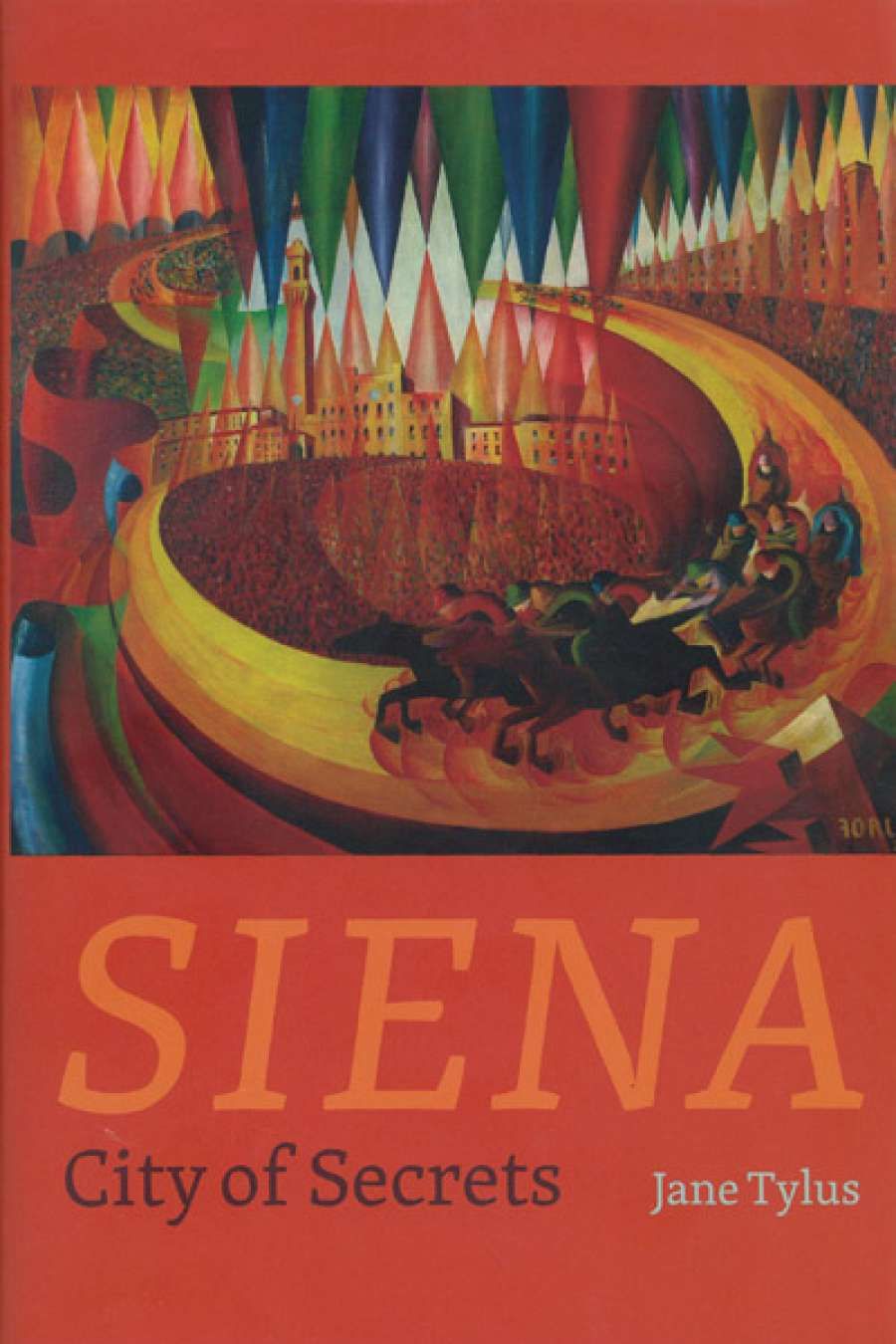
- Free Article: No
- Contents Category: Cultural Studies
- Custom Article Title: Christopher Menz reviews 'Siena' by Jane Tylus
- Book 1 Title: Siena
- Book 1 Subtitle: City of Secrets
- Book 1 Biblio: University of Chicago Press (Footprint), $54.95 hb, 265 pp, 9780226207827
Siena, being on hilltops has no river nearby and lacks a reliable water supply. For centuries this was an ongoing source of concern for the city, a point noted by Dante. What most visitors do not realise is that that the city rests on an extraordinarily complex series of tunnels or bottini that once formed part of the original water supply for the wells above. Though dry now, they are still maintained as yet another part of city’s historical fabric. Siena’s historical water issue – water is now piped from outside the city – makes Tylus ponder anew the significance of the biblical subject of Judith and Holofornes depicted in the Duomo pavement. While it is well known that Judith decapitated the drunken enemy general Holofernes because he had intended to destroy Bethulia (her home town), it is not so appreciated that he had stopped its water supply in order to bend it to submission. In the mid-sixteenth century, the Florentines, taking their cue from the Bible, but unable to stop the supply of water to Siena, found their way in to the bottini and poisoned it instead. During World War II the bottini provided a refuge for the city’s Jews.
Without great natural resources the Sienese were forced to exploit other skills. This is neatly summarised: ‘Stranded on hills without ready access to water. Deprived of the resources that by the late thirteenth century had made Florence a centre for wool production, the Sienese realized they had to use their in-betweenness strategically. Unable to manufacture cloth … Siena became good at buying it, dyeing it, then selling it for high prices …’ Merchants became bankers: ‘Siena was the Wall Street of Europe. Its seventy towers formed a skyline not unlike that of lower Manhattan …’ Furthermore, Siena was ideally placed to benefit financially from its place on the pilgrimage route, the Via Francigera (French Road) that connected Tuscany and Flanders. It provided a safe haven from the perils of travelling in medieval Europe and made money from the pilgrims.
 Duomo, Siena (photograph by Gryffindor via Wikimedia Commons)
Duomo, Siena (photograph by Gryffindor via Wikimedia Commons)
‘Without great natural resources the Sienese were forced to exploit other skills’
No book on Siena can omit the incomparable Duomo. Tylus captures the mystery of this stupendous Gesamtkunstwerk admirably. In exploring the works here, she draws our attention not to Michelangelo, but to more modest works on the Life of Mary, carefully describing the scenes depicted. She quotes Vasari on the remarkable paving: ‘the largest, most beautiful and most magnificent floor ever made.’ Like many visitors to the Duomo, she finds ‘there is always room for discovering, searching for something overlooked no matter how often you return …’ Less visited and less obvious buildings are also given space, such as the 1,000-year-old former hospital (Spedale), with its frescoes by Vecchietta, in the piazza opposite the Duomo, and Santa Maria dei Servi, her favourite church in the city, since it covers the full gamut of Sienese art, from the thirteenth to the eighteenth century.
Tylus, with her sharp eye for detail, observes fellow visitors to Siena’s monuments and events. She notes their country of origin, how long they stay, when one of them trips on the steps on the way out of a church. She leads the reader through the complexity of the Palio; her description of it, its cultural background, and the elaborate rituals that surround it make fascinating reading and show that this is much more than just another horse race.
Having just revisited Siena, I wish I had had the e-book to accompany me. Away from Siena you will want to read the elegantly produced hardcover version with a map of the city and a guide to its art and architecture beside you.


Comments powered by CComment